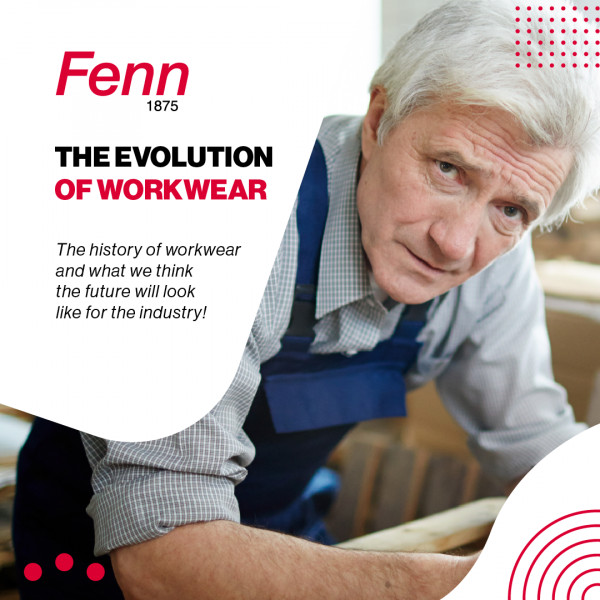Britain’s workwear industry is growing at a steady rate - predicted 4.3% every year until 2027. However, the heritage behind the industry is just as rich, with various iterations all the way back from the middle ages until the present day. As times have changed, new challenges continue to emerge for workwear manufacturers, shaping the way we purchase today and will do so in the future.
Challenges like the ever evolving health and safety regulations, increasingly fashion conscious consumers and the scarcity around natural resources have drastically changed the workwear items we now buy. To help you future-proof your workwear, we’re going back to the beginning and looking at the industry as a whole - before making our predictions on what will happen next!
Basic functionality
The first workwear garments harked back to the medieval times and were used in the military or in trades like stone masonry and blacksmithing. Armour was the original PPE, with metal plates used to protect the soldiers in combat and trades used basic cuts of leather to help protect their skin from heat and debris from wood, stone and metal.
During the industrial revolution workwear evolved again, taking into consideration design elements that were made for safety and durability. Miners took to wearing thick corduroy overalls and heavy boots for protection. Different variants were used in factories like shirts without collars to reduce the odds of getting caught in the machinery.
The rise of mass produced garments
Materials like denim became popular in America, due to its hard wearing fabric and designs made popular by Levi Strauss and Jacob Davis. The patented “waist overalls” featured copper rivets in key areas to minimise the trousers tearing in the seams. While they were originally intended for use by miners - they rapidly grew in popularity across other manual labour roles such as farming. The innovation continued too with jackets and blouses made out of the material.
Health and Safety became important
The proliferation of industrial roles also gave rise to the workers representation unions. Focus was on manual roles and the concept of health and safety started to become standardised. This gave way to occupation specific uniforms where garments needed to comply with minimum standards, be fit for purpose and comfortable for the workers.
The concept of branding arrives
Synergistically, companies started to create workwear uniforms and put their logo or name on the garments. This rise in branding was a marker for quality and an easy way to identify which company employees represented. It also doubled as a visual signfier for the size and prowess of a company and to showcase status and position within the organisation.
Workwear as fashion
With the rise in branding and design led pieces, it became a matter of time before workwear started to infiltrate our downtime attire and influence consumer trends. Jeans led the way with phenomenon and was closely followed by Doc Martins - becoming a cult classic for punk groups in the 1980’s. Mass production, branding and comfortable designs paved the way for a profitable crossover and money was then re-invested into advertisement to keep the cycle going - bringing us the industry we see today!
So… What will happen in the future?
Our predictions for the future of workwear take into consideration the rich heritage of the industry and external influences most prevalent at the times of change.
Given the necessity to become more sustainable, we anticipate that garments made from recycled materials will increase. Alongside this, as technology progresses we’ll see new materials and enhanced recycling methods to ensure we’re re-using as much as we possibly can.
Garments will be expected to last longer and be of better quality, both for sustainability and economic reasons. Instead of the throw away culture we’ve become accustomed to during the mass production era, new innovations through materials, business models and designs will prolong the life-span of clothes we wear.
New knowledge around health and safety will see further personalisation in workwear and PPE with items created to cater to specific conditions and precautions. Protecting the health of everyday workers and preventing any injury later down the line. We’re also seeing a rise in products like workwear boots that help to mitigate symptoms of health issues such as diabetes, given its prevalence in the general population.
Inspiration taken from performance enhancing technologies found in sports in migrating across to workwear too - further solidifying comfort as a key element when choosing your workwear. Teamed with a stylish and timeless design to appeal to an increasingly image conscious workforce, products are expected to be great quality, comfortable and responsibly made.
For help with your workwear needs, email us at This email address is being protected from spambots. You need JavaScript enabled to view it.
